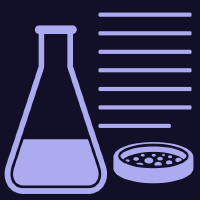Topic Menu
► Topic MenuTopic Editors


2. National School of Professional Training, Volos, Greece
Emerging Material-Based Approaches to Chronic and Infectious Diseases
Topic Information
Dear Colleagues,
Chronic and infectious diseases represent a significant burden to healthcare providers due to the long-term and repeat nature of these conditions. Due the need for repeated rounds of drug administration, these conditions are also beset by off-target toxicities, loss in efficacy and multidrug resistance (in the case of microbial infections). The development of novel materials (either synthetic or naturally derived) can be applied to address these shortcomings through a number of approaches. Novel materials can be designed to enhance nanoparticle uptake and bioavailability, reduce toxicity or target specific cell types. Rapidly growing techniques such as 3D printing allow for the creation of in situ material implants that can deliver drugs in a local fashion for a range of chronic and infectious applications. This Collection aims to bring together the wide variety of approaches in novel materials-based solutions for both chronic and infectious diseases. Authors will have the choice to submit to either MDPI Antibiotics or Pharmaceutics to maximize exposure to the most fitting target audience.
Dr. Alan J. Hibbitts
Dr. Sofia A. Papadimitriou
Topic Editors
Keywords
- nanoparticles
- biomaterials
- autoimmune
- fibrosis
- anti-microbial
- inflammation
- gene therapy
- 3D printing
- smart nanomaterials
Participating Journals
| Journal Name | Impact Factor | CiteScore | Launched Year | First Decision (median) | APC |
|---|---|---|---|---|---|

Antibiotics
|
4.8 | 5.5 | 2012 | 13.7 Days | CHF 2900 |

Pharmaceutics
|
5.4 | 6.9 | 2009 | 14.2 Days | CHF 2900 |

Pharmaceuticals
|
4.6 | 4.7 | 2004 | 14.6 Days | CHF 2900 |

Methods and Protocols
|
2.4 | 3.8 | 2018 | 27.9 Days | CHF 1800 |

MDPI Topics is cooperating with Preprints.org and has built a direct connection between MDPI journals and Preprints.org. Authors are encouraged to enjoy the benefits by posting a preprint at Preprints.org prior to publication:
- Immediately share your ideas ahead of publication and establish your research priority;
- Protect your idea from being stolen with this time-stamped preprint article;
- Enhance the exposure and impact of your research;
- Receive feedback from your peers in advance;
- Have it indexed in Web of Science (Preprint Citation Index), Google Scholar, Crossref, SHARE, PrePubMed, Scilit and Europe PMC.

